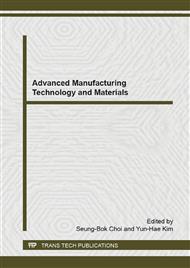p.147
p.155
p.159
p.163
p.167
p.172
p.181
p.185
p.190
Research on Structural and Ultra-Structural Changes of Grass Carp during Different Crisp Periods
Abstract:
In order to study the influence of muscle structural changes on the special brittleness mechanism of crisp grass carp (Ctenopharyngodon idellus C.et V, CGC) during different crisping process of grass carp (Ctenopharyngodon idellus, GC), samples were periodically acquired and then prepared for light and transmission electron microscopy during the whole process. For GC and CGC, all muscle tissues had typical features, whereas there were much more interstitial tissues and narrower intermyofibrillar spaces in CGC than those in GC. Meanwhile, the muscle fibers diameter, intermyofibrillar space and myofibrils to endomysium detachment lengths of GC were significantly decreased with increasing duration of crisping time. While the muscle fibers density and sarcomere lengths were significantly greater in CGC than in GC. In view of the structural and ultra-structural differences in these samples, it was conceivable to suggest that short muscle fiber diameter, high fiber density, narrow intermyofibrillar spaces and wide lengths of sarcomere were the main causes of increased muscle brittleness.
Info:
Periodical:
Pages:
167-171
Citation:
Online since:
January 2015
Authors:
Keywords:
Price:
Сopyright:
© 2015 Trans Tech Publications Ltd. All Rights Reserved
Share:
Citation:


